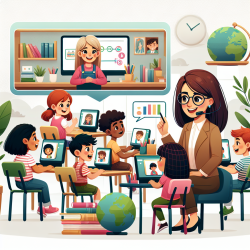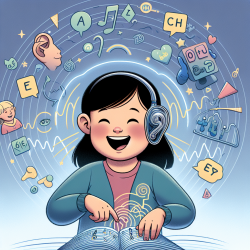As school counselors, you stand at the forefront of shaping an educational environment that is not only conducive to learning but also supportive of the emotional and psychological well-being of your students. In the rapidly evolving landscape of education, telepractice has emerged as a powerful tool in our arsenal to enhance school culture, making it more inclusive, accessible, and adaptable to the needs of every child. The integration of online therapy services, like those provided by TinyEYE, into school settings has opened new avenues for us to reach and positively impact more kids than ever before. This exploration is not just about adopting new technologies; it's about fostering a culture of care, understanding, and continuous improvement that resonates with every member of the school community.
At the heart of a thriving school culture is the collective endeavor to understand and meet the diverse needs of our students. It's about recognizing that each child's educational journey is unique and that the challenges they face can't always be addressed through traditional means alone. Telepractice offers us a flexible, innovative approach to supplement our efforts in building a nurturing environment where every student feels seen, heard, and valued.
The curiosity around telepractice often revolves around its efficacy and how it can be seamlessly integrated into the fabric of our existing school culture. The evidence supporting the effectiveness of online therapy services in educational settings is compelling, demonstrating significant improvements in student outcomes across a variety of domains, including academic performance, social skills, and emotional well-being. By leveraging telepractice, we can extend our reach beyond the physical confines of the school, offering support to kids who might otherwise slip through the cracks due to geographical, logistical, or socio-economic barriers.
One of the most profound impacts of integrating telepractice into our schools is the way it democratizes access to specialized support services. Whether it's speech therapy, occupational therapy, or mental health counseling, online therapy breaks down the barriers that prevent kids from receiving the help they need. In doing so, we not only address the immediate challenges our students face but also contribute to a more equitable school culture where every child has the opportunity to succeed.
However, the adoption of telepractice is not without its challenges. It requires us to be innovative in our approach, adaptable in our methods, and persistent in our efforts to ensure that technology enhances rather than hinders our connection with students. It's about finding the right balance between the human touch and technological advancement, ensuring that our students feel supported and engaged, even in a virtual setting.
As school counselors, we play a crucial role in this process. We are the bridge between the technological possibilities offered by telepractice and the human needs of our students. It's our responsibility to advocate for the integration of online therapy services in a way that aligns with our school's values and culture. This means working closely with teachers, administrators, parents, and students themselves to create a shared understanding of the benefits and limitations of telepractice, fostering an environment of collaboration and mutual support.
To truly enhance our school culture through telepractice, we must also focus on the professional development of our staff. Educating teachers and counselors about the nuances of online therapy, the technological requirements, and the best practices for engaging students in this format is essential. This not only ensures the effective implementation of telepractice but also empowers our educators to become more adept at using technology as a tool for enriching the learning experience.
Moreover, engaging parents and caregivers in the conversation is crucial. By providing them with the knowledge and resources they need to support their children's participation in online therapy, we create a stronger, more supportive community around our students. This partnership between school and home is vital in reinforcing the positive impacts of telepractice and ensuring that the benefits extend beyond the classroom.
Ultimately, the goal of integrating telepractice into our schools is to inspire a culture of inclusivity, accessibility, and resilience. It's about creating an environment where every student, regardless of their background or challenges, feels empowered to reach their full potential. As school counselors, we are at the forefront of this transformative journey, guiding our schools towards a future where every child has the support they need to thrive, both academically and emotionally.
In conclusion, as we navigate the complexities of our evolving educational landscape, let us remain curious and open-minded about the possibilities that telepractice presents. By embracing online therapy services as a complement to our existing support systems, we can enhance our school culture in profound ways. It's a journey that requires collaboration, innovation, and above all, a deep commitment to the well-being of our kids. Let's be inspired to take this step forward together, creating a more supportive, inclusive, and accessible educational environment for all.










